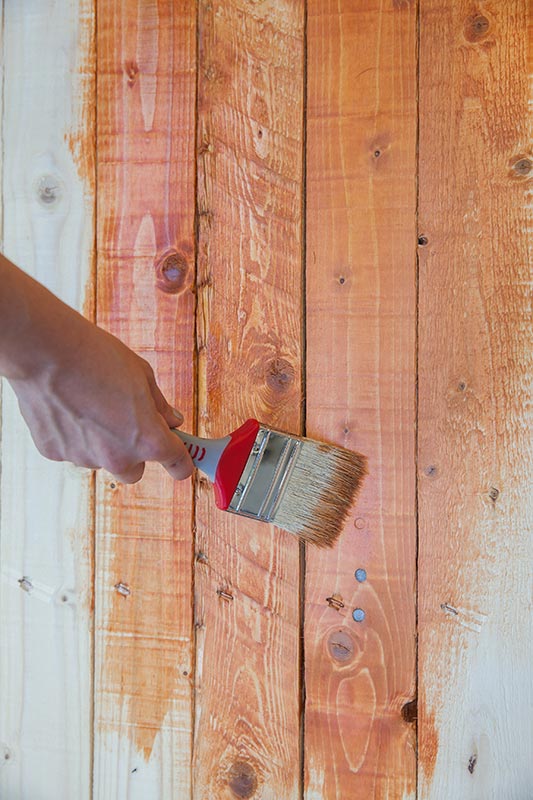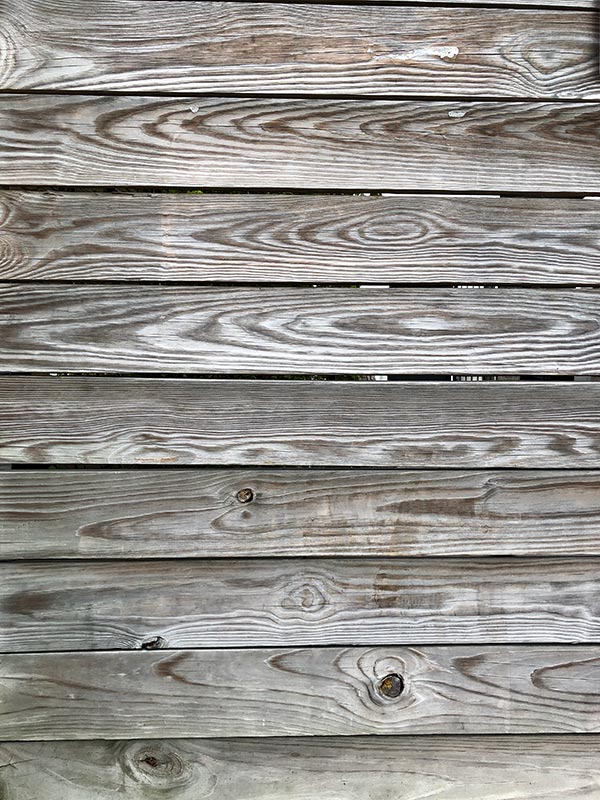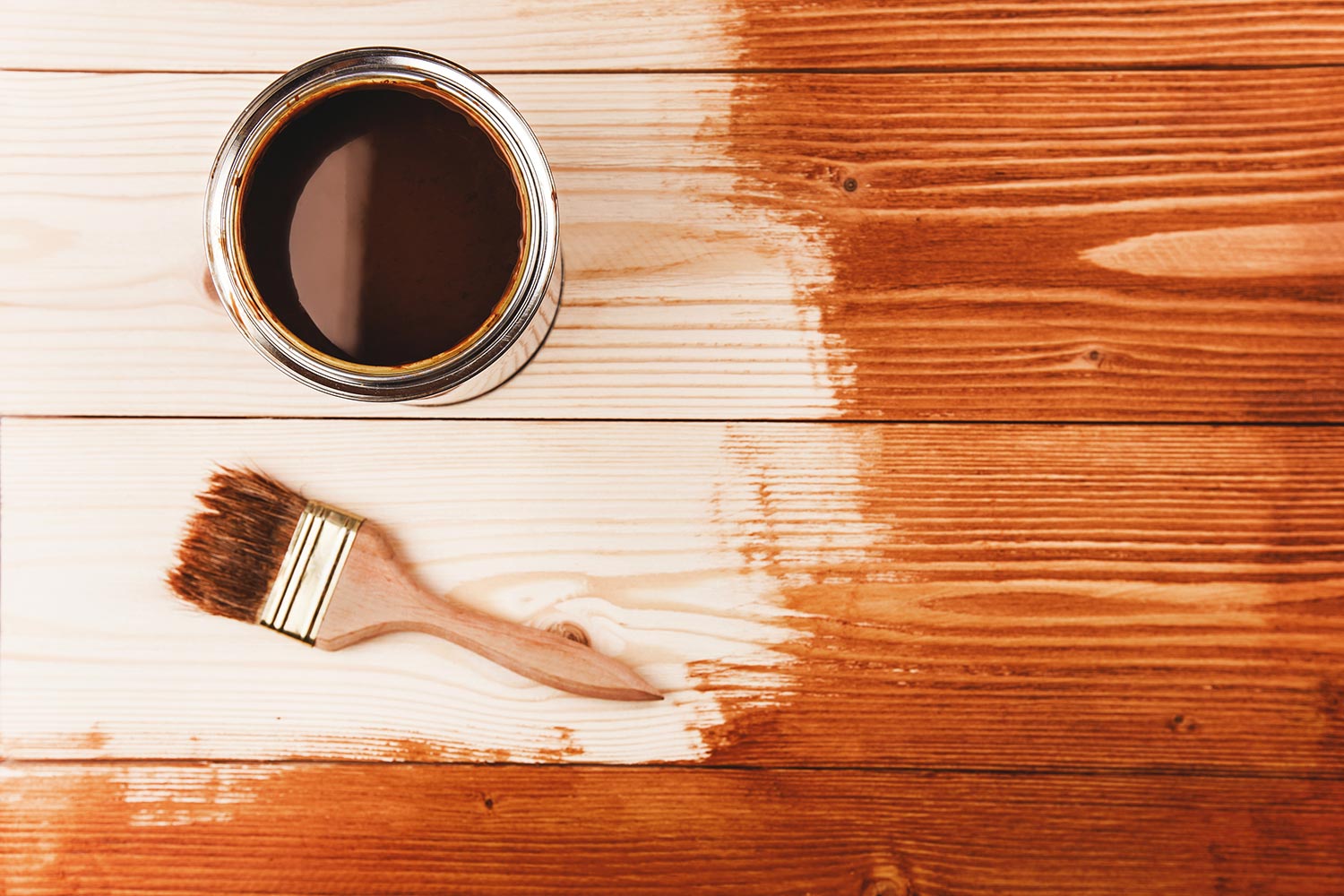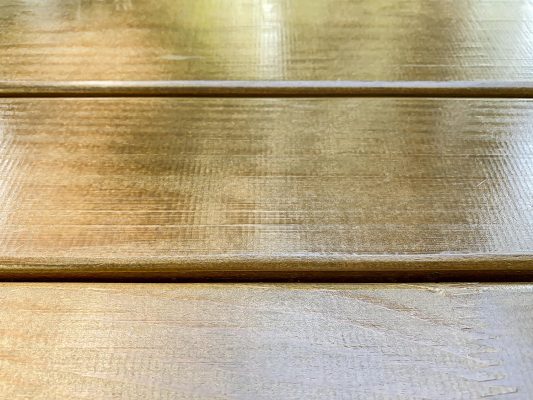Cedarwood paneling is a classic, low-maintenance favorite among homeowners. But low maintenance doesn't always mean you don't have to do some upkeep. One of the first obstacles you'll face keeping your cedar looking like new is dirt and grime. We've checked with cleaning experts for the best tips on how to clean cedar wood walls.
Most of the time, cleaning cedar wood walls requires regular dusting. Especially in the case of finished, sealed wood, wipe it clean frequently with a soft cloth. For extra dirty walls, you can make a wood cleaner or use a commercial product. Furthermore, you can also clean with a soapy water mixture if the wood is sealed.
In this article, we'll give the specifics on cleaning cedar wood walls. We even have a great homemade cleaning recipe to share. Then we'll cover how to get rid of mildew. Finally, we'll offer some pointers on restoring and refinishing your walls to keep them looking great for years to come.
![Woman dusting a wood wall with a feather duster, How To Clean Cedar Wood Walls [Inc. Mildew]](https://homedecorbliss.com/wp-content/uploads/2022/02/How-To-Clean-Cedar-Wood-Walls..png)
How To Clean Cedar Wood Walls
Most wood walls only need regular dusting. Just use a soft cloth or brush to wipe them down frequently.
You can also make your wood cleaner as needed. Mrs. Clean suggests the following recipe:
- one cup water
- 1/4 cup vinegar
- 1/2 cup of mineral oil
- 20 drops of lemon oil
Be sure to use mineral oil and not food oils such as olive or vegetable. The oil will build up and go rancid in time, creating a bad odor that negates your cleaning efforts.
Sealed wood is easier to clean with minimal effort. Sealed wood can also be wiped clean with soapy water as needed. Just mix half a cup of liquid detergent with a gallon of water.
Unsealed wood, on the other hand, may require extra cleaning. It may not wipe clean easily with water - partly because the wood may absorb it.
Commercial cleaners such as Murphy's Oil Soap may be necessary.
Follow this link to see it on Amazon.
How Do You Clean Mildew Off Of Cedar?
Even if your cedar walls are in mostly good shape, mildew can sneak up on you. So how can you get rid of any mold or mildew spores?
It is possible to get rid of mold and prevent damage to the wood. Just use bleach, but not any bleach: make sure it's oxygen bleach.
Most people use chlorine bleach. This chemical can ruin any protective coating on the wood plus discolor or damage the wood itself.
On the other hand, Oxygen bleach is safe and will not remove any color from the wood. Mix it as directed and scrub down the wall.
Then wipe with a clean, wet sponge and let it dry completely.
See this bleach cleaner on Amazon.
How Do You Restore Cedar Walls?
In general, restoring cedar walls is a rather labor-intensive process. But when you're done, you'll at least have gorgeous walls to show off to friends and family. To do this:
- Remove old finish. You can use a scraper for big areas, such as peeling paint. You can skip this part if it's just a natural cedar wood with a stain.
- Fix any minor imperfections. Use wood putty to fill in small holes, dings, etc.
- Sand the surface until smooth. This will get rid of surface scratches. It also helps expose the wood and remove any old stain.
- Thoroughly clean the surface. Remove all dust. You can wipe with a damp cloth or use a vacuum extension.
- Wash the wall. Mix a capful of bleach and a little soap in two liters of water. Wipe the walls with a sponge and this mixture. Rinse with clean water. Let the wood dry completely.
- Apply a new finish. With a paintbrush, you can stain or paint the wall as desired. If you paint, primer is necessary for cedar. The natural oils in cedar are very prone to bleed through without a good primer coat.
Note: If you want to keep your cedar looking natural, use penetrating oil. It seals the wood without drastically changing its appearance. Examples include tung oil or linseed oil.

Does Cedar Need To Be Sealed?
Cedar is a very durable wood that resists decay. Since it's not prone to damage or rot, a protective sealant is optional most of the time indoors. The only exception may be in a bathroom, where excessive moisture makes use of a sealer prudent if not necessary.
One of the main advantages of not using a sealer is that you can still enjoy aromatic cedar varieties. However, while optional, sealing cedar has many advantages. You can also use other finishes besides sealer, such as paint.
When placed in direct sunlight, cedar turns gray quickly. The right sealer can prevent this or at least help minimize it.
Even without the sun, cedar is prone to weathering. If you don't mind the natural changes of the wood color, sealing isn't necessary. Be aware that it may age inconsistently, especially with varying amounts of sunlight.

Still, some will be repainting the stain every few months, restoring the old color. If this is you, save yourself a lot of work and protect your walls with a sealant.
A good coat of sealant also makes the wall easier to clean.
Cedar can be finished with wax, stain, varnish, penetrating oils, or paint. Each has advantages and disadvantages.
Wax
If you don't want to change the look of your wood, go with wax. It doesn't offer as much protection as other options, though.
Wax sits on top of the wood. It keeps the wood from turning gray, but that's about it.
It won't enhance the grain or add any luster, as a stain or oil might. It's also quite time-consuming and a lot of effort to cover a wall in wax.
All in all, the wax tends to leave the wood looking unfinished. But some people desire that "raw" appearance.
Stain
Stains come in transparent, semi-transparent, or colored options. Transparent stains contain no pigments and will not cover the natural tones of the wood. It can slow down the graying process but will not stop it entirely.
You can select Semi-transparent stains that match natural cedar tones. This can help restore the wood's color if it's started to gray. It can also help to delay more changes.
Colored stains are the best choice if you want to change the tone of the wood altogether. You can add a pop of color or restore the old shade to already-weathered wood.
Stain is not, technically, a finish. Not all stains offer much protection, and some only change the surface color of the wood. But since cedar is already quite durable, this is a suitable choice for most inside wood walls.

Penetrating Oils
Penetrating oils include linseed oil or tung oil. These are very similar to a stain. They are sold in clear colors or the same colors as many stains.
Oils may change the color of your wood slightly, even the clear oils. But they also penetrate the wood to seal and protect it. This is unlike a stain, which only changes the surface color of the wood.
Paint
The obvious advantage of paint is that you won't have to worry about the wood's color underneath. This is also the disadvantage.
After all, most people with cedar walls picked cedar for a reason. They don't necessarily want to cover up the wood with paint.
This is, of course, a matter of taste. It's an easy and relatively low-maintenance way to cover up cedar walls. If that's the desired effect, paint is a simple way to get those results.
Varnish And Other Clear Finishes
Many people opt for transparent finishes to enjoy the wood underneath. The most common example of these is varnish.
Some people prefer these as they don't like the smell of stained wood. They also offer a more durable and higher level of protection. In high traffic areas, this can be beneficial.
These finishes will always look a bit less rustic than a stain. They leave a noticeably shiny, glossy coat over top of the wood.
However, this isn't necessarily a bad thing. Some people prefer the more maintained look that varnish or shellac offers. Others desire a more natural-looking wood.

How Do You Keep Cedar Wood Looking New?
While cedar is a pretty durable wood, the appearance changes quickly. If keeping your cedar looking new is important to you, you have to seal it.
There's just no way around it. While cedar can stay strong and avoid rot unsealed, it won't look new for long. It ages quickly without a protective cover.
The best way to protect your wood without changing the look is by using a clear sealer with UV blockers. This keeps the sun from bleaching or changing the wood.
In Conclusion
In order to keep your cedar walls from premature aging, sealing is vital. While the wood itself is durable, it can gray and weather quickly. Sealing also makes the wood much easier to clean.
Once properly sealed, you can keep your walls in great shape just by regularly wiping them down with a soft cloth. For occasional deep cleaning or extra grimy spots, wipe the walls with soapy water.
Unsealed wood can be trickier to clean as it absorbs dirt. With a good sealer, dirt instead sits at surface level. As a result, it's easy to swipe right off.
If you enjoyed this, try reading:


